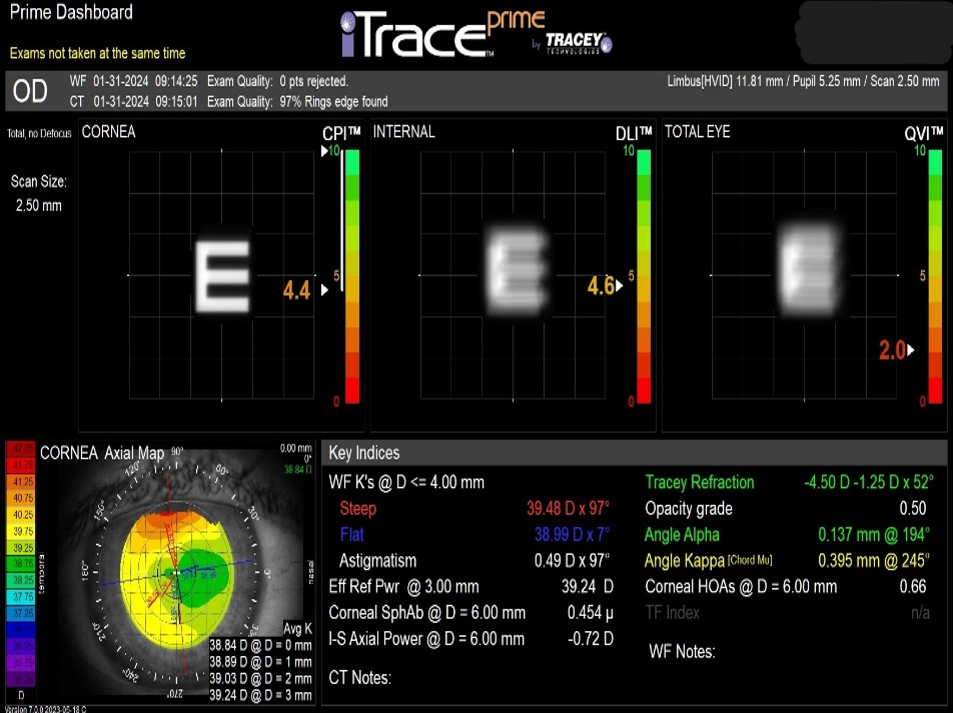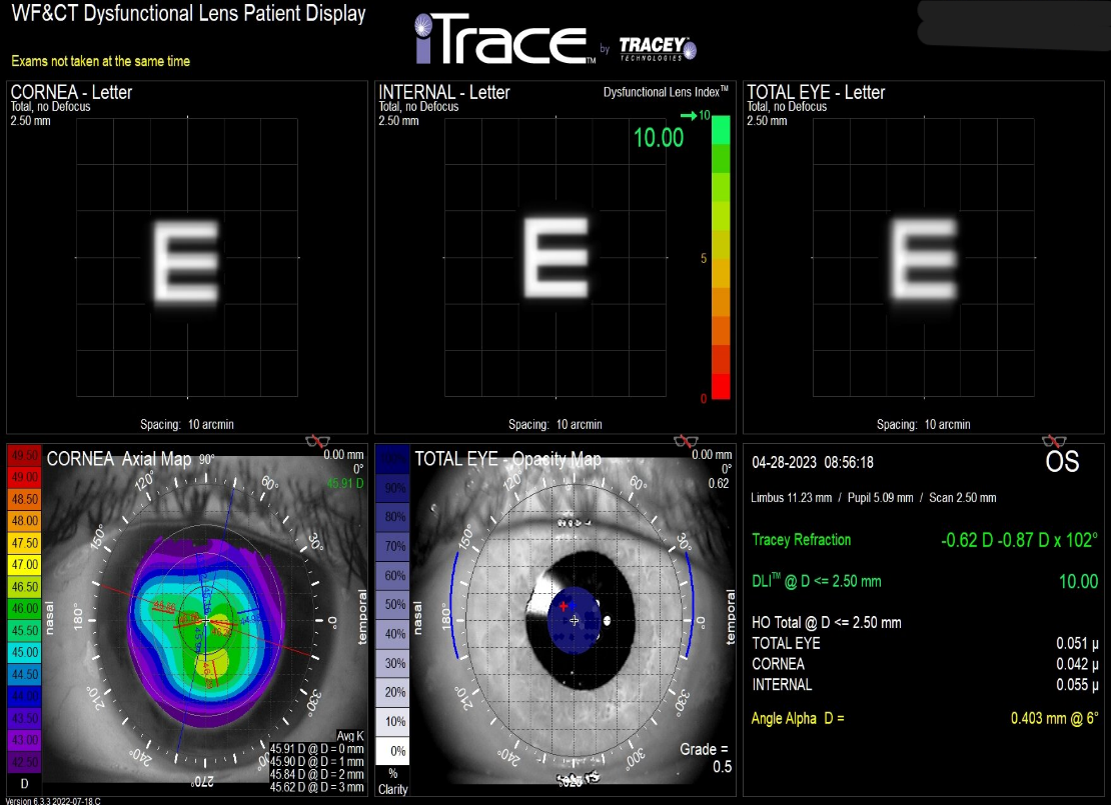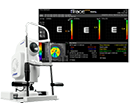Case Study: Enhancing Surgical Outcomes with iTrace: Dr. G. Peyton Neatrour’s Experience
Meet G. Peyton Neatrour, MD
At ASCRS 2024, he shared his experience with the iTrace and discussed the reasons why it has become a critical tool in his surgical planning process — key to navigating cases that are anything but straightforward.
These complex cases are the reason why even experienced practitioners rely on the iTrace — when patients have vision issues complicated by vision correction procedures, the iTrace is the only tool that can provide the kind of precise data to help make confident decisions and reach the best possible outcomes. During his talk, Dr. Neatrour discussed a few examples.
Case 1: Post-PRK Complications and Lens Dysfunction
Patient: 46-year-old, experiencing post-PRK glare, nearsightedness, and visual discomfort due to an early-stage cataract.


“iTrace gave me the answers I needed. Without it, I wouldn’t have fully understood the corneal and lens interplay causing her issues.”
Case 2: Post-LASIK Cataract Surgery Complications
Patient: 68 years old, with poor vision post-hyperopic LASIK and monofocal IOL surgery.


Using iTrace, Dr. Neatrour identified substantial corneal aberrations and a decentered optical zone, leading to the recommendation of a wavefront-guided enhancement. iTrace enabled him to precisely target the residual aberrations and restore the patient’s distance vision.
“The precision of iTrace in understanding and correcting complex post-op issues is unmatched. It’s essential in cases like these.”

